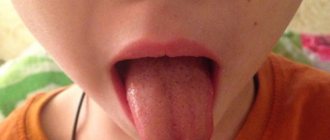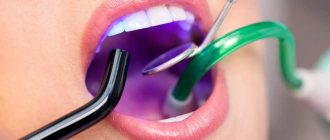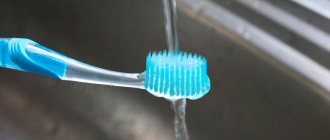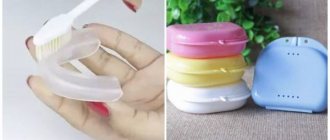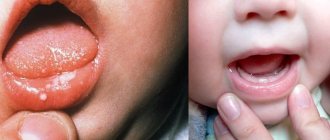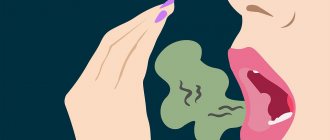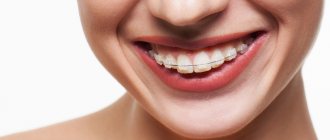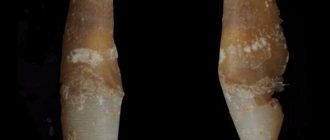It is very difficult to get off the flour “needle”, and many people believe that the only way out of this trap is not to allow themselves delicious buns in any form. But is it worth making such sacrifices? And is it possible to pamper yourself with flour products without fear of gaining extra pounds?
How not to gain weight while continuing to delight yourself with your favorite pastries? This question was asked by almost every lover of delicious croissants with coffee or fragrant buns with a cup of cocoa. We answer the most exciting question of flour lovers together with the endocrinologist, nutritionist at the SM-Clinic Ulyana Viktorovna Rumyantseva.
In fact, the composition of high-quality bread and baked goods is quite simple: it is water, flour (wheat, rye, corn, buckwheat, rice), salt, sugar and (not always) yeast. They may also contain bran, grains and seeds (so-called bran and whole grain bread). Cheap flour products often contain flour brighteners (bromates), dyes, artificial thickeners, flavorings, and flavor enhancers.
Now you see that the difference between all flour products lies only in the type of flour, the amount of carbohydrates they contain and the presence or absence of other additives - yeast, margarine, bran, cereal grains and seeds. It is in this small difference that lies the harm or benefit of certain flour products and the degree of their influence on a person’s weight.
Choose foods with a low glycemic index
For those who are watching their weight, the most important indicator is the glycemic index (GI) of baked goods: the higher it is, the faster after eating the sugar level rises, followed by insulin in the blood, which lowers sugar levels and increases appetite .
GI directly depends on the composition and quality of flour, the amount of sugar added to the dough, various sweet fillings that increase the GI of the product, and the presence of bran, cereal grains and seeds, which lower it. The maximum GI is for wheat flour without adding bran and whole grains, the minimum is for rye flour, with bran, and whole grain. For example, white bread made from refined flour has a GI of 95, a bun without additives 85, cakes, cookies, pastries - 100, pancakes, pancakes, cheesecakes - 70, simple bread - 75. On the other hand, whole grain breads have a GI of 45, and bread from wholemeal flour with added bran and rye bread - 50.
Is it possible to reduce the GI of a finished product? Yes, it is partially possible by placing the flour product in the freezer. So, freezing bread for 10 minutes reduces the GI by 10 units. Storing bread at sub-zero temperatures is also helpful in preventing mold from growing in it. The combination of baked goods with proteins (eggs, cottage cheese, meat) and fermented milk products (kefir, yogurt) also collectively reduce the GI of the food eaten.
Details of the evening menu
Late dinner has a number of restrictions. Of course, we are not talking about a full meal. It's like a late-night snack to improve your metabolism and promote sound sleep.
- Choose foods that are easy to digest . Dinner should not include fried or too fatty foods, because they take a lot of time to digest. But dishes that are steamed and cooked in water are available in the evening. You can also eat foods baked in foil.
- Choose warm food for the last meal before bed , this is the key to a restful sleep. Allow yourself some long carbohydrates, they will calm your brain.
- The importance of the main amino acid tryptophan for sleep has long been scientifically proven. It is involved in the production of melatonin (regulator of biorhythms) and serotonin (responsible for emotional well-being). The source of tryptophan is protein: hard and processed cheeses, crabs and shrimp, chicken, rabbit, turkey, and legumes. It is found in eggs, cottage cheese, and cereals. In order for the amino acid to reach the brain, complex carbohydrates are also needed. Therefore, the interaction of long carbohydrates with proteins is a direct path to the brain and restful sleep.
Other tryptophan foods include seeds and nuts, honey and bananas. A spoonful of honey with a small amount of low-fat milk is an ideal recipe for sleep, especially for snorers.
- A sleep hormone such as melatonin is synthesized, in addition to the above products, by cherries and cherries, almonds and pine nuts. Whole grain bread is also good for this purpose.
The situation with melatonin will be improved by oatmeal, but be sure to eat porridge, do not confuse it with cereal. Such food is an exemplary mixture of protein compounds and long carbohydrates. But, it is important to always adhere to the permissible serving size. Overkill is unacceptable.
- Calcium is extremely important for conducting impulses along nerve fibers. In order not to spoil your sleep and make the muscles of the larynx work, eat dairy products with a small percentage of fat for dinner. Give preference to yogurt.
- Another factor that affects sleep is magnesium. To avoid violations, eat pumpkin seeds or spinach, peanuts or cashews for dinner.
What is prohibited? Avoid foods high in saturated fatty acids and heavy foods. You don't need to drink a lot of fluids in the evenings, as you will have to get up to go to the toilet too often at night. Remember, the best rest is uninterrupted sleep.
Do not include red meat, sausages, or offal in the evening menu. Chocolate and salted fish are not good for you in the evening. Also, avoid coffee and strong black tea at dinner.
But a little soothing chamomile or lemon balm tea is helpful. You can brew hawthorn fruits. It is useful for hypertension, which is often the cause of snoring.
You ate a bun - move around
What else can you recommend to bun lovers? Movement! Flour products are carbohydrates that, when broken down, provide energy to the body, so you should not eat any carbohydrates in the evening, especially before bed. If you eat flour in the first half of the day and move actively, or even better, play sports, then by the end of the day you will use up all the energy you received from carbohydrates and its excess will not be stored as fat.
How long after training can you eat, and what to eat beforehand?
When you are actively exercising, you find the optimal period - before or after work, in the evening before bed, or 2-3 times a week, but in any case, you start exercising between meals.
Let's look at a few popular options.
Exercising or jogging early in the morning before breakfast
To this day, trainers argue about the usefulness of training on an empty stomach. A common belief is that there is little glycogen left after sleep, so the body will break down the fat layer
Opponents of this theory argue that morning exercise leads to muscle weakening.
If you choose this option, then you don’t need to eat anything at all before exercise, but you should drink a glass of clean water 15-20 minutes before starting. This rhythm is suitable for short runs and other moderate-intensity aerobic exercise. Strength complexes should not be performed before the first meal.
You can eat in 20-30 minutes. During this time, active processes of lipid breakdown will take place; you should not wait longer.
Workout in the morning after a light snack
If you feel that you cannot start exercising without a light breakfast, then give preference to small, but carbohydrate-rich portions. Good fit:
- bananas;
- cereal cookies;
- a piece of cheese with coffee;
- granola bar;
- a glass of medium-fat dairy products.
But such a menu should fit into 100-150 grams, so as not to create heaviness, but only to replenish strength.
It is better to eat a full breakfast 30 minutes after training, which will replenish the energy spent.
Exercise during the day, afternoon or evening
If you do not exercise in the morning, you should first make a snack of complex carbohydrates - cereals, fruits, vegetables - 1.5-2 hours beforehand. Many people believe that you need to give preference to proteins, but this is not entirely true - meat will weigh down your digestive system, but will not provide enough energy - it will be difficult for you to move, your strength will not last long. Protein foods are suitable for replenishing energy costs after exercise so that muscles do not lose their elasticity.
Monitor the amount of flour products you consume (and their calorie content)
Of course, the amount of carbohydrates consumed is also important. Even a small amount of white bread without bran (no more than 2 pieces), which you ate in the first half of the day, will not affect your weight in any way. For those who count calories, it should be noted that the calorie content of 100 g of white bread is about 270 kcal, and rye bread is minimal - 200 kcal. A piece of gray bread made from mixed flour (rye-wheat) weighing 100 grams has a calorie content of approximately 210 kcal. Whole grain bread, although it has a calorie content of 250 kcal per 100 g of product, due to whole grains, has a lower GI and is generally less harmful to the figure.
Say no to margarine
In addition to GI, weight gain can be affected by eating flour products with the addition of margarine.
Therefore, it is very important to read the information on the labels about the composition of the bread and its expiration date - in the case of high-quality bread, it cannot exceed three days. If it is larger, preservatives are probably added to such bread. Margarine adds calories to the product. The content of bran, grains and seeds in baked goods saturates it with microelements and vitamins, so this bread is the most healthy and causes a longer feeling of fullness with a smaller volume of consumption due to “slow” carbohydrates. The latter are broken down and absorbed gradually, without causing a sharp increase in the level of glucose and insulin in the blood.
Look for alternatives
I would like to separately highlight the breads that people who watch their figure love so much.
You need to be extremely careful with them, because they look small and light, but have a fairly high calorie content. So, a pack of bread is equal in calories to a whole loaf of bread! If you still prefer bread, choose rye and with bran and whole grains. For people who, for medical reasons or other reasons, adhere to a gluten-free diet, there are baked goods made from buckwheat, corn and rice flour. About the expert:
Ulyana Viktorovna Rumyantseva Endocrinologist, nutritionist at SM-Clinic, Ph.D.
How is the filling installed?
First, the doctor prepares the tooth for restoration - removes pathological tissue and forms a cavity, removing softened dentin and enamel. This ensures the durability of the filling. If the tooth is severely damaged, the dentist removes the nerve, installs a pin, and only then proceeds to filling the canals and forming a crown.
Before starting work with photopolymer material, he etches the cavity with acid to clean the walls of sawdust and other foreign particles formed during drilling of the affected tissue. This manipulation helps to open the dentinal tubules, which improve the fixation of the filling.
After this, the doctor applies an adhesive material, which acts as a connecting link between the tooth and the photopolymer composition. After illuminating it, the doctor applies the filling material in small portions in layers, carefully pressing it to the bottom and walls of the cavity. Each layer is exposed to ultraviolet light. When the dentist completes the modeling, he grinds and polishes the surface of the filling.
Goodbye croissant: how to get rid of cravings for flour forever
We are sharing the most effective life hacks, approved by an expert nutritionist.
The first rule of the Cinnamon Bun Club is: don't tell anyone about the Cinnamon Bun Club. But how to lose weight if life without flour seems dull and gray? We sorted out all the nuances of the issue together with a clinical psychologist-nutritionist, a member of the national association of clinical nutrition, Anna Ivashkevich.
The presence of sweets in the diet, especially flour, not only spoils the figure, but also causes problems with the skin and digestion. So, if you are a devoted fan of croissants and cannot pass by a bakery without looking languidly, you should definitely listen to the advice from our material.
How long does pain last after tooth extraction?
During the removal procedure, the tissue that surrounded the tooth is injured and the gums become inflamed. Due to the effect of anesthesia, the patient does not feel pain immediately after removal. But after a couple of hours, pain may occur. Over time, the pain becomes less and less. The duration of pain depends on numerous factors:
- The patient takes medications prescribed by the doctor to speed up healing.
- Complexity of the procedure.
- Strict compliance with all instructions and recommendations of a specialist.
After a complex removal, pain can spread not only to the gums, but also to the cheek, as well as to neighboring teeth. The healing process after such manipulation will take a little longer. Swelling after tooth extraction usually goes away within a couple of days. If, several days after the procedure, swelling and pain do not go away, then this may be a symptom of the development of complications. In such a situation, you must immediately seek the help of a specialist. In our 3D dental clinic "NovaDent" all surgical procedures are performed using high-quality modern anesthesia. The consultation is conducted by experienced, qualified dental surgeons who remove teeth as carefully as possible. We try to create comfortable living conditions for our patients, and do everything possible to minimize the risks of complications after removal. By making an appointment with our dentistry, you will receive a detailed consultation, be able to undergo highly accurate diagnostics, and also receive high-quality dental services using modern equipment using reliable materials. Sign up right now on our website using the registration form or call the administrators, who will be happy to find a convenient appointment time for you - we work seven days a week and weekends. Phone number to make an appointment with our specialists. Trust your health only to professionals!
Set a goal
It could be anything - losing weight, the desire to fit into your favorite jeans, improving your health, getting rid of acne on your face, etc. Without desire, motive, and a clear, formed goal, nothing will happen. If you still find it difficult to force yourself, there is another way - keeping a diary. Write down every meal there and leave a comment: did you eat this bun because you were really hungry, or out of idleness, boredom, anxiety? By reviewing your notes, you will be able to understand the real motives for eating, because, as practice shows, we do not always eat because of hunger.
Don't eliminate all flour from your diet at once
Such a “fall into the pool” will not lead to anything good - on the contrary, a breakdown will be even more real.
If you have finally decided to give up flour, remember that you should gradually reduce your consumption of baked goods (and other foods that you have decided to give up - sugar or salt, for example), otherwise you run a very high risk of becoming depressed. Do you like coffee with two spoons of sugar? We reduce their number to one. Do you like to eat a box of cookies in one working day? Reduce to 4-5 pieces. Do you like bread? Get rid of the white, take rye or bran. Every day, reduce your intake of the foods you want to avoid.
After difficult removal
Such removal is carried out when the dental roots are incorrectly located, on unerupted dental units or in the absence of the crown part of the tooth. Also, more complex surgical procedures may be required if the wisdom tooth is located too far away or a cyst has formed next to it. Late erupted wisdom teeth most often create many problems. Basically they grow incorrectly. The formation of a cyst is a bubble filled with cells and bacteria. And if the cyst is not removed on time, this can lead to the development of serious consequences. After such manipulations, sutures are placed at the removal site. The healing period of the gums after complex tooth extraction may vary in each specific case. If the specialist has not stated, then you should definitely clarify how long after the procedure you can start eating. It is also necessary to take into account the fact that when stitches are applied, they will have to be removed after some time. But with sutures, the socket is more reliably protected. However, even in this situation, you should refrain from eating hot, salty or spicy foods immediately after the removal procedure.
Three week rule
- In the first week, we remove all carbonated drinks and juices, including freshly squeezed ones, from the diet. Put less sugar in coffee or tea. If you “can’t stand it,” you can add a little honey, and you can drink coffee with milk, but no more than one cup a day.
- In the second week, we get rid of strategic stocks of cookies, sweets, and baked goods in the house. We try not to buy dough or new sweets at the store. Try to remove “provoking” foods from sight - instead, put an apple, a pear, yogurt, and put a thermos with water.
- In the third week we learn to see “hidden sugar”. We pay attention to the composition of products, including breakfast cereals, muesli, cereals, ready-made cereals, and find out what healthier analogues can replace them.
Many food manufacturers often mislead us. The packaging will say “sugar-free”, but you will immediately notice a whole series of minor additions – “fructose”, “glucose syrup”, “glucose”, “dextrose”, “sucrose”, “maltodextrin”.
Review your diet
An irresistible craving for flour is often associated with an incorrect diet. Long breaks between breakfast and dinner will prompt you to snack on buns from a nearby coffee shop. An ideal nutritional schedule should be close to the following:
- From 7 to 9 (depending on what time you wake up) – breakfast.
- At 11 we have a light snack - a handful of nuts/yogurt/apple.
- At one o'clock in the afternoon - lunch.
- Around 15 or 16 – light snack again. The ideal option would be chopped vegetables - cucumber, pepper, carrots, celery.
- At 18: dinner.
If you are a night owl and your day starts at 12 noon, stagger your meal times to suit your individual schedule. Remember that if you went to bed around one in the morning, your snack should take place at two in the afternoon, otherwise a breakdown will be guaranteed.
When can you drink
When asking a specialist how long after tooth extraction you can eat, most patients are also interested in the question of taking liquids. There are no contraindications to clean water, and you can drink it immediately after surgery. However, experts do not recommend rinsing the mouth. This is due to the fact that using liquid from the hole can wash out a blood clot, and this can provoke the development of complications. Experts advise drinking only boiled water, which should not be hot.
Drink water
The most banal but effective way to lose weight.
You should drink two to three glasses of clean drinking water throughout the day, but you definitely shouldn’t force it into yourself. Every time you feel the need for something sweet or starchy, take a few sips of water and eat an apple slice. You'll see, this will help you cope with your cravings for buns. About the expert:
Anna Ivashkevich is a clinical psychologist-nutritionist, nutritionist, member of the National Association of Clinical Nutrition.
Published on the portal marieclaire.ru
Why is it important to follow your dentist's recommendations?
Modern methods and technologies for caries treatment, which are used by doctors in dental clinics, help quickly, painlessly and effectively solve the problem of dental caries. If the doctor correctly selected the filling material and installed the filling in compliance with all technological details, the restored tooth can serve the patient for many years.
But, in addition to the professional work of the doctor and the quality of materials, the durability of the filling is affected by compliance with the dentist’s recommendations immediately after caries treatment.
One of the first questions to ask your doctor is when you can drink water and have lunch or dinner after dental treatment.
